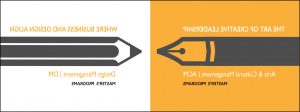I remember when Twitter came out. I thought, at the time, that it was absurd; a glorified Facebook status delivery system. I took pride in not using it. Over the years, as my experience using the web deepened, I’ve realized its value: not only in it’s ability to create and promote business opportunities but in its ability to create change. Twitter, and social media at large, has been playing an instrumental role in the situation in Egypt, which is a testament to the power of strategic design as a social innovation tool to connect people around a single cause.
Strangely enough, Facebook officials have remained silent on the platforms role in the overthrow of the government in Egypt. Twitter, on the other hand has proudly acknowledged its role in the events that have been taking place over the last month. Today in Fast Company, it was reported that Twitter is using the situation to strategically move into the area of philanthropy. The new project is called Hope 140.
Using the hash tag #betterworld, users can tweet about efforts they are taking to make the world a better place. However, the experience goes deeper than just referencing good deeds online. Twitter is partnered with a set of non-profit organizations, helping connect their users to organizations they could benefit from or add value to. Some of the notable causes the service is tied to include Help Haiti Now, and International Literacy Day.
Whether or not there is more to this philanthropic push remains to be seen. What cannot be doubted is that the service has entered the realm of politics in the most surprising way possible, and is likely to evolve as more regions become exposed to its value. One of the protesters from Egypt, user @alya1989262 was interviewed on the Hope140 site. He had this to say about the future use of Twitter:
“…We’re planning how to use social media to counter government propaganda that paints protesters as violent, confused youth, misled by “foreign elements” into harming our own country. We need to enter the conversation with people who believe what they’re told on TV, and the best way to do that is using social media to present our arguments in a calm, logical manner.”




